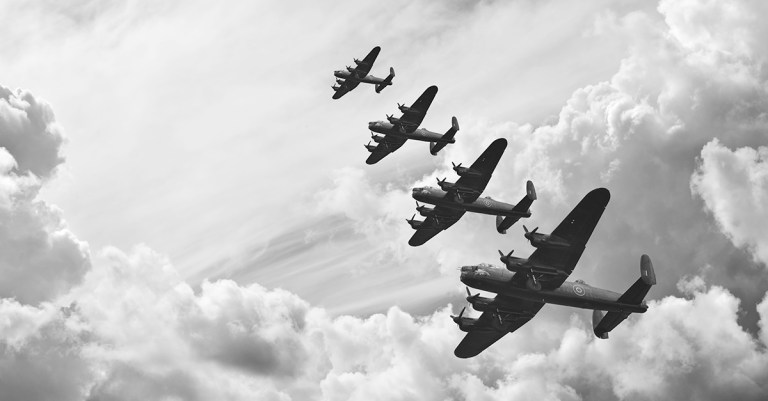
Shopping Cart
Hitler’s Last Plot
The 139 VIP Hostages Selected for Death in the Final Days of World War II
Description
In April 1945, as Germany faced defeat, Hitler planned to round up the Third Reich’s most valuable prisoners and send them to his “Alpine Fortress,” where he and the SS would keep the hostages as they made a last stand against the Allies. The prisoners included European presidents, prime ministers, generals, British secret agents, and German anti-Nazi clerics, celebrities, and officers who had aided the July 1944 bomb plot against Hitler–and the prisoners’ families. Orders were given to the SS: if the German military situation deteriorated, the prisoners were to be executed–all 139 of them.
So began a tense, deadly drama. As some prisoners plotted escape, others prepared for the inevitable, and their SS guards grew increasingly volatile, drunk, and trigger-happy as defeat loomed. As a dramatic confrontation between the SS and the Wehrmacht threatened the hostages caught in the middle, the US Army launched a frantic rescue bid to save the hostages before the axe fell.
Drawing on previously unpublished and overlooked sources, Hitler’s Last Plot is the first full account of this astounding and shocking story, from the original round-up order to the prisoners’ terrifying ordeal and ultimate rescue. Told in a thrilling, page-turning narrative, this is one of World War II’s most fascinating episodes.
What's Inside
One
The Corridor of Death
Tuesday 3 April 1945: Germany
If the Nazi eagle adorning the Reich Chancellery facade were to come to life and take flight, it would witness a scene of ruination: the gutted shell of the Chancellery itself—beneath which the Führer and his staff are lurking in their claustrophobic bunker—and, for miles around, the bomb-devastated streets of the German capital.
Flying now northwest from Berlin, away from the approaching Soviet forces, the eagle would pass over the Lehnitz forest and the blue waters of the Lehnitzsee. Between the lake and the outskirts of the town of Oranienburg, it would see a curiously shaped enclosure. A triangle, a third of a mile from end to end, like a vast arrowhead pointing northwest. It is surrounded by walls, electrified fences, and guard towers. Inside are barrack blocks arranged in an arc like the blades of a fan, and the “death strip” between the inner and outer perimeters. The eagle’s acute vision would see the gallows between the barracks and the enclosure at the triangle’s base containing the SS administration blocks and Gestapo offices. On the western edge, smaller enclosures sprout from the triangle: factories, the shooting range, the execution block, and the gas chambers.
This is Sachsenhausen concentration camp, one of the ultimate expressions of the system the Nazi eagle stands for, a machine for the production of human misery. Nearly forty thousand prisoners have been murdered here: Jews, political prisoners, and Russian prisoners of war.1
Joined to one edge of the triangle are two more enclosures: small and barely noticeable from the air beside the huge spread of the main camp. One is subdivided into four tiny sections, each with a single building, almost like suburban houses on their own small plots, but surrounded by guard towers and unusually high walls. The second enclosure contains a few small barrack buildings.
These are Sonderlager A and Sonderlager B—Sachsenhausen’s “special enclosures.” Here, and in similar facilities at Buchenwald and Dachau concentration camps, the Third Reich houses some of its most valuable prisoners: the presidents and prime ministers of conquered countries, anti-Nazi plotters, spies, enemy officers who have been habitual escapers from POW camps. The Germans call them Prominenten.* Some have been in captivity for years, some have only recently arrived. None will remain for long now. The Führer, raging in his Berlin bunker as the carcass of the Reich falls apart above him, has approved a bitter, vindictive plan for these prisoners. Heinrich Himmler and other senior figures believe that their lives might serve as bargaining chips with the Allies. Failing that, the prisoners will make suitable targets for revenge.2
The handsome, rather earnest face of Wing Commander Harry “Wings” Day looked up from the bleak barbed-wire enclosure of Sonderlager A at the predawn sky. Air activity was reduced somewhat these days. Bombs had fallen on neighboring Oranienburg, but the really big raids on Berlin were rare now, the main weight of the Allied air assault diverted elsewhere. A heavy daylight attack by hundreds of American bombers had hit the capital the previous week, but since then there had been just small night raids by the Royal Air Force: lightning strikes in fast twin-engine Mosquitos.3
Around Day, some of the other Prominenten were gathered under the eerie glow of electric lanterns held by their SS guards, who stood with casual menace, machine pistols at the ready. The Prominenten of Sonderlager A were a curious bunch: an international collection of men in the ragged uniforms of the Royal Air Force, the Red Army, and other military outfits, including British, Italian, and Greek. Usually their patter ranged from Irish brogue to Italian braggadocio, but this morning they were quiet.
They’d been roused from their bunks at an ungodly hour and ordered to pack their things. Many suspected the worst, and the atmosphere of weary resignation was tinged with fear of impending slaughter. The Soviet prisoners especially were convinced that they were about to be shot. The Third Reich was in its death throes, and those who had served it slavishly over the years showed every intention of wanting to drag everyone else down with them.4
From the east, barely fifty miles away, the faint, insistent rumbling of Red Army guns was becoming ever more distinct. From the west and south, reports of the Allies’ relentless advance were becoming more urgent by the day. And over the whole of Germany, endless streams of Allied bombers stoked the Reich’s burning embers. In Sachsenhausen’s overcrowded hospital, medical staff had been struggling around the clock to cope with the influx of civilian casualties from Oranienburg. Meanwhile, the wretched inmates of the main camp died from rampant disease, starvation, and maltreatment—or were shot in the “death pit” where thousands before them had perished. Their remains were piled up, awaiting cremation. The chimneys belched out a foul smoke, the stink of which was impossible to escape. The SS personnel were beginning to panic, and additional streams of black smoke had begun drifting across the administrative complex as records and other sensitive documents were hastily burned.
There were rumors of plans to liquidate the remaining witnesses to Sachsenhausen’s darkest secrets.5 As they waited to be told what was to be done with them, Wings Day and the other Prominenten wondered whether they would be next to vanish up the crematorium chimney.
Standing beside Day, Flight Lieutenant Bertram “Jimmy” James drew his greatcoat tighter—the same faithful, battered, blue RAF coat that had seen him through nearly five years of captivity (the last eleven months here in Sachsenhausen) and thirteen escape attempts. Over his shoulder was a haversack containing his few meager belongings. Still a couple of weeks short of his thirtieth birthday, James wore an expression of breezy good humor and untrammeled optimism, which rarely deserted him. During their captivity, he and Day had come close to being shot several times and had risked being buried under tons of soil in the many “tunnel jobs” they’d participated in at a variety of POW camps. They’d endured interrogation by the Gestapo and witnessed firsthand the depravities of the Nazi regime.
In contrast with Jimmy James’s youth and zest for life, Day was forty-six, with a more sober, sardonic outlook and an urbane and deceptively languid manner. He’d been shot down and captured barely six weeks into the war and, as a senior officer, had been de facto commander of his fellow RAF prisoners for much of his time in captivity.6 He was a cool hand in a crisis and a determined escaper. Like James, Day was a veteran—and one of the key organizers—of the legendary Great Escape of March 1944, when seventy-six men tunneled out of Stalag Luft III. Like almost all the other Great Escapers, James and Day had been recaptured, but unlike most they’d been spared execution. Along with two of the other survivors, they had been transferred to the special compound at Sachsenhausen. Again they had escaped, again they’d been recaptured, and again they had been spared execution and returned to Sonderlager A.
Compared with the bestial conditions in the main concentration camp, the two VIP compounds were enclaves of civility.7 Besides the Great Escapers, Sonderlager A was home to a number of British, French, Polish, and Russian officers, their Italian orderlies, and four Irish soldiers. They included some of Joseph Stalin’s senior commanders, three secret agents from Britain’s Special Operations Executive (SOE), a celebrated British commando known for his daredevil bravery, and several RAF officers. They inhabited quite comfortable, spacious quarters in timber barrack buildings and had reasonable rations and rudimentary sanitation. Except for certain enmities (the Poles and Russians did not speak, such was the mutual loathing between their two countries), this disparate group of nationalities generally enjoyed each other’s company—sharing meals, socializing, and engaging in animated discussions about the war and politics.8
They never saw inside the neighboring special compound. Sonderlager B was even more comfortable, consisting of four “villas” (actually large, six-room huts), each enclosed by its own high walls. The inmates were the real VIPs, at various times including former presidents and prime ministers of conquered countries. These prisoners were provided with amenities that were positively luxurious. They were even permitted radios, and the camp authorities turned a blind eye when they tuned their sets to the BBC, a crime severely punished in the rest of the Reich. They were allowed books and newspapers, and some had brought their own home furnishings, paintings, and other decorations.9
Nobody, inside or outside the camp, was supposed to know the VIPs were there. Some were registered under false names and ordered by the SS never to reveal their true identities to anyone—be it guards or fellow prisoners. They were victims of Adolf Hitler’s 1941 Nacht und Nebel* directive, which caused inconvenient opponents to disappear.10 Full secrecy, however, was often impossible to police effectively, even by the all-powerful SS.
By the time the officers in Sonderlager A gathered in the dawn of 3 April, the last of the great statesmen had already left Sachsenhausen, plucked from their compounds without warning a few weeks earlier and taken to an undisclosed destination. The villas were now occupied by senior members of the Russian and Greek general staffs, including the famed Lieutenant General Aleksandros Papagos, formerly commander in chief of Greece’s armed forces. Gaunt and hooknosed, Papagos had conducted a spirited defense against the Italian invasion in 1940 and 1941, and his fame had won him the accolade of a romantic portrait on the cover of Time magazine.11 Although Wings Day had discovered Papagos’s identity from his Greek orderlies, the SS determinedly kept up the pretense of secrecy, and every week a little pantomime took place when the generals were led though Sonderlager A to the showers in the main camp.12 The British and other officers were locked in their huts under close guard, and only when the Greeks had completed their ablutions and returned to the privacy of their villas were the Sonderlager A prisoners allowed out again.13
Now the pretense had been dropped, and as the prisoners in Sonderlager A assembled in the cold dawn gloom, the elusive Greeks joined them. The haughty Papagos and his entourage stood disdainfully apart from their shabby neighbors, with their ragged old greatcoats and humble knapsacks. Standing beside their surprisingly large quantity of luggage, the Greeks seemed less concerned about being shot by the Germans than being robbed by their allies.14
As the sun rose—their curiosity and nervousness about what was going to be done with them rising with it—the British officers spotted a familiar friendly face coming toward them through the line of SS guards: Inspector Peter Mohr of the Berlin criminal police.15
Five months previously, Mohr had almost certainly saved some of the British officers from being executed. Five of them—including Wings Day and Jimmy James—had staged a remarkable escape. Using nothing more than their barrack cutlery, they had dug a 120-foot tunnel out of Sonderlager A, probably the only escape tunnel ever dug from a Nazi concentration camp.16 The breakout caused enormous confusion and prompted a manhunt across the Reich, involving over a million police, home guard, Hitler Youth, and ordinary Germans. The escape had caught the SS high command completely by surprise and, in terms of inconvenience to the Third Reich, it surpassed the Great Escape in importance.17 It prompted ill-disguised merriment inside Sachsenhausen, even among the starving inmates who could expect bloody retribution from their guards for displaying such insubordination.
The SS had reacted with cold fury. The British officers had been warned that if they ever escaped again they would not live to tell the tale. Consequently, when they were all recaptured and manacled in Sachsenhausen’s punishment block, they expected the worst; Himmler himself had ordered that they be tortured before being disposed of.18 It was Inspector Mohr who had stood in the way of this happening. He argued that if the prisoners had committed any misdemeanor, it came within his criminal jurisdiction rather than the Gestapo’s. He insisted on a properly arraigned criminal tribunal to judge whether the escapers had committed any crime. After many hours of testimony from Wings Day, the tribunal had concluded that they had not broken any laws.
Ever since, the British officers had had a warm place in their hearts for the benign figure of Inspector Mohr.19 As they stood waiting to learn their fate this April morning, it was reassuring to see his face.
Mohr spoke to Day and assured him that the prisoners were not going to be shot. Instead they were to travel by train to a location some distance south of Berlin. He refused to disclose their exact destination but did reveal that, along with a complement of twenty or so SS guards, the Prominenten would be traveling under his supervision.
Soon afterward, with the early light growing in the sky, the order came through: prepare to move. Knapsacks were shouldered, servants hefted the Greeks’ luggage, and—guarded by an SS detachment led by a friendly SS corporal known as George—the prisoners were marched out of the camp. Outside the gates, they found two well-appointed buses waiting for them. Eager to get out of the morbid surroundings of Sachsenhausen, the men climbed aboard.20
They were taken to the main railway station in bomb-damaged Oranienburg, where a train with two carriages was waiting in a siding. Under Corporal George’s genial supervision, the small party embarked and found seats. The whole business was proving to be remarkably polite and civilized, without the usual threats and bellows of impatience. Day noted that Mohr was keen to ensure that the prisoners were comfortable and happy.21 As Wings settled into his surprisingly pleasant seat, however, he was determined not to be lulled into a false sense of security. He had learned through experience that some Germans were thoroughly duplicitous, perfectly capable of turning from civility to unrestrained savagery in an instant. The war was still on, and Day would remain on his guard.
As the train pulled away, the Prominenten were warned that Allied aircraft were in the habit of strafing railway traffic. Far from being concerned by this news, the British were delighted by it; as habitual escapers, they had no doubt that the ensuing panic and confusion would provide them with a suitable opportunity to slip away.
None of the prisoners had allowed the years of captivity to diminish his enthusiasm for troublemaking. Aside from Day and Jimmy James, the other Great Escapers aboard the train included Flight Lieutenant Sydney Dowse, a dashing blond Spitfire photoreconnaissance pilot, and Flight Lieutenant Raymond van Wymeersch, a flamboyant Hurricane pilot from Charles de Gaulle’s Free French Air Forces. As the miles of German countryside clattered slowly by, Van Wymeersch itched for any opportunity to make mischief for his captors. His character showed in his face: tight-lipped, with narrow, intense eyes under a shock of dark curls. He was an irrepressible soul, who had gone to England after the fall of France and joined the RAF’s No. 174 Squadron. Van Wymeersch had suffered terribly after the Great Escape, interrogated by the Gestapo and told that his parents—his mother lived in France and his father was in Buchenwald concentration camp—would be killed.22 But his experiences hadn’t defeated his spirit, and now, as the train traveled south, Van Wymeersch was full of optimism.
Lieutenant Colonel John Churchill was a British commando officer. Thirty-eight years old, hard faced, and aggressive, he was nicknamed Mad Jack and renowned for carrying a Scottish broadsword into action. He believed an officer was not properly dressed without his sword, and he had actually used his in hand-to-hand combat with the enemy. During the retreat to Dunkirk in 1940, Mad Jack Churchill had scored World War II’s only kill of an enemy soldier with a longbow.23 Captured in 1944, he had become one of the Prominenten by error, the Germans mistaking him for Randolph Churchill, the British prime minister’s son. Whatever the circumstances, Mad Jack was not a man who took captivity lightly.
In contrast with his more hot-headed fellow prisoners, Wings Day was a calm, serious, even somber man, with the air of a commanding officer more than an adventurer. During his time in captivity he had cultivated an ambivalent attitude toward the Germans. He loathed those who served the Nazi regime willingly, but he drew a distinction between them and the officer class of the Wehrmacht, and particularly the Luftwaffe. He came from a military family and had served in both world wars—first in the Royal Navy then the Royal Air Force. Like many British and German officers—especially the airmen—he saw himself as a cut above the rest of humanity. Day always insisted that his men treat German officers with due military decorum, and he expected the Germans to reciprocate. Nonetheless, throughout his captivity his guiding principle had been to urge his men to fight the war from behind the wire. His approach to escape had always been strategic; even if there was little hope of reaching friendly territory, escapes caused trouble for the enemy, diverting men and resources from the war effort. Day sensed that this move from Sachsenhausen was the most critical in his five and a half years as a prisoner, and he watched and waited to see what would develop.
The journey was slow, interrupted by frequent stops.24 The train trundled through Berlin’s western outskirts, a wasteland of rubble, clattering over damaged tracks. The prisoners saw destruction and desolation like none they had ever witnessed before. Neighborhoods lay in ruins, some still smoldering. The roads, pocked with craters and littered with debris, were swarming with troops, tanks, and refugees fleeing the front lines. Old men and women walked with barefoot children in rags, carrying their remaining possessions stuffed in suitcases or piled on battered strollers and carts. Many had cattle, sheep, pigs, and chickens in tow. Some bore the homemade coffins of their recent dead. Women fought with one another over potatoes or coal they found lying on the road. Armageddon had arrived for Nazi Germany.25
Jimmy James “speculated on the outcome of this extraordinary train journey through the crumbling corridor which was all that was left of Hitler’s mad dream.”26 Mohr and the SS escort—including Corporal George—behaved with punctilious correctness, but none of them would disclose the ultimate destination or why the prisoners were being taken there. A worrying rumor circulated that they were being taken to a mountain redoubt, possibly in Bavaria, where they would be kept as hostages—and, if necessary, executed.
One prisoner who took a dark view of their prospects was General Ivan Georgievich Bessonov, a garrulous Soviet officer who was friendly with the British. An anti-Communist who had collaborated enthusiastically with his Nazi captors (at one point forming a commando team of sympathetic Russian POWs to fight behind Soviet lines), Bessonov was deeply untrustworthy.27 Wings Day, who had come to know him well, described him as “a man who would just as soon shoot you as kiss you.”28 Bessonov believed the rumor that they would be used as hostages. “Ja,” he said, voicing the thought that nagged at them all, “then when the Allies will not meet their demands, they will shoot us.”29
Whatever was in store, such important prisoners would certainly not be allowed to fall into the hands of the Allied armies. Instead they were being herded down an ever-narrowing strip of territory, compressed on both sides by the rapidly converging Allies, into the shrinking heart of the Third Reich. Day wondered what would happen when there was nowhere else to go. When further retreat became impossible, what then? What would their fate be at the end of the corridor of death?30
* Prominent ones, VIPs, celebrities
* Night and fog
Two
Blood Guilt
Tuesday 3 April: Buchenwald concentration camp
The Sachsenhausen Prominenten were not the only high-ranking prisoners anxious about their fate. While they were being taken from their compound that morning, 170 miles to the southwest the inmates were waking in the cheerless environs of Buchenwald. Another group of Prominenten reluctantly greeted a new day of uncertainty.
Buchenwald was a sprawling complex, a small city of ninety thousand souls in torment, carved out of the beech forest from which it took its name, just outside the historic town of Weimar. Buchenwald was one of the Reich’s oldest concentration camps, founded in the early years of the Nazi regime.1 The main gate bore the slogan Jedem das Seine: literally “to each his own,” although it could also be read as “everyone gets what he deserves.” Above the gate was a second slogan reflecting the ethos expected of all Germans under Nazism: “My fatherland, right or wrong.” An ancient seat of culture, genteel Weimar had been a beacon of the German Enlightenment and in 1919 the birthplace of the nation’s first democratic constitution. The irony was not lost on the wretched inhabitants of the concentration camp, which had been built in the old ducal hunting forest on the summit of the Ettersberg, consuming the hill’s woods and stone in the building. From the air it was like a patch of mange on the back of an animal.
The situation of the Prominenten was different here, their enclosure set well apart from the main camp. Buchenwald had been designed as part concentration camp, part SS training center, part playground for the Nazi elite—equipped with stables, hunting and falconry facilities, and even a zoo, in addition to the huge SS barracks, all built by prisoners in conditions of unspeakable cruelty. The main camp, in which the mass of prisoners lived, was enclosed by an electrified fence and watchtowers; outside this was the SS complex and an armaments factory and quarry in which the inmates labored, all enclosed by a ring of sentries. In the center of the SS area was the so-called Spruce Grove, Buchenwald’s special compound, walled so that nobody could see in or out. Within it were the isolation barracks where most of the camp’s many Prominenten were kept.2
By early April 1945, everyone in the camp had been listening for weeks to the rumble of distant artillery, imagining that liberation must come soon.3 They feared that Himmler would order their liquidation at the last minute, and some had smuggled in weapons in anticipation of such a move. Meanwhile, the SS personnel, sensing their own approaching doom, were nervous about the huge mass of prisoners in their charge, while in Weimar the people were “as afraid of the camp as of the devil himself.”4
Buchenwald’s Prominenten now received the first definite indication that the end really was nigh. On the morning of 3 April 1945—at the same time as the order was given in Sachsenhausen—word came: be prepared to move within the next few hours. No further information was given.
One of the VIP prisoners—by far the most eminent in Buchenwald—had been given advance notice of the move. Léon Blum, former prime minister of France, had been in the camp since April 1943. To the Nazis, Blum “embodied what they hated most in the world, since I was a democratic socialist and a Jew.”5 He had also been a determined opponent of the puppet Vichy government. A few days away from his seventy-third birthday, Blum was in ill health. Given all these factors, it was a marvel he had survived this long. His face was thin, gaunt, and draped with his trademark walrus moustache, his bright, good-humored eyes gazing out at the world through round tortoiseshell spectacles.
Blum didn’t live in the Spruce Grove with the other Prominenten; he had special private quarters in the SS falconry complex. This bizarre place comprised an aviary, a gazebo, and a large Teutonic hunting hall built with carved oak timbers and massive fireplaces, filled with trophies and furniture to match. It had been created for the personal use of Hermann Göring, in his capacity as Reich hunt master. Göring never even visited the place, but many local Germans did—for a fee of one mark they could come in and look around.6
In this remarkably insecure setting—no fences surrounded this part of the camp—Léon Blum lived with his young wife, Jeanne (or Janot, as she was known), occupying the falconer’s house. “The severity of our isolation,” Blum later wrote, “explains a fact which is incomprehensible at first; I mean our long-lasting ignorance of the unutterable horrors that took place only a few hundred metres from where we were.” They were aware of a “strange smell that often came through the open windows in the evening and pursued us the whole night when there was a constant wind from the same direction: it was the smell of the crematorium ovens.”7
Having been alerted in advance, he and Janot were already packed and ready to go on the morning of 3 April. A car drew up outside the house, an SS officer in the front seat. Blum, who was suffering a painfully debilitating bout of sciatica, could hardly stand and had to be carried to the waiting vehicle on a stretcher. Despite his undoubted moral courage, his experiences at the hands of the Nazis had sometimes reduced him to a state of abject anxiety. As he was propped awkwardly in the back seat next to Janot, the thought must have crossed his mind that his last hours could not be far away.


























